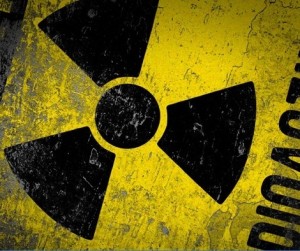 New reports coming out saying that all of the nuclear fuel at reactor unit 1 have melted and broken the bottom of the steel pressure vessel inside the reactor. The corium (melted nuclear fuel) is now on the bottom of the concrete below and is eating it's way down further and soon it will reach the containment vessel steel that is the last defence before completely outside.
New reports coming out saying that all of the nuclear fuel at reactor unit 1 have melted and broken the bottom of the steel pressure vessel inside the reactor. The corium (melted nuclear fuel) is now on the bottom of the concrete below and is eating it's way down further and soon it will reach the containment vessel steel that is the last defence before completely outside.  Reports say that not only is this happening in reactor unit 1 but also in Unit's 2 and 3. In the light of this it has again shown the seriousness of the Fukushima Disaster.
Reports say that not only is this happening in reactor unit 1 but also in Unit's 2 and 3. In the light of this it has again shown the seriousness of the Fukushima Disaster.The melted nuclear fuel in reactor unit 1 have already eaten it's way 65cm into the concrete below and have another 37cm left before it reaches the containment vessel steel.
In Unit 2 and Unit 3 it is estimated that 63% and 57% of the nuclear fuel have melted outside. The situation is serious and with this new information there are doubts in my mind that workers can continue to work close the the reactor units for much longer. Radiation readings outside the reactor buildings are already high.
This is a confirmation that radiation levels are high even outside the reactor buildings. There are reports done from Yoichi Shimatsu that radiation levels outside the Nr. 2 reactor building to be 1000 millisieverts or 1 Sieverts per hour.
☢ MP3 Fukushima Report with Jeff Rense and Yoichi Shimatsu 14 Nov 2011 ☢We also hear from Henry living in Japan about 100 km from the Fukushima Daiichi Nuclear Power Plant that news is highly controlled and he show us a video from a private owned television channel showing 300 microsieverts on camera when reporters where allowed to take a bus tour outside.
☢ Fukushima Press Controlled Reporters Told To Put Down Cameras When Radiation Spiked ☢
Unit 1 fuel melting erosion 65cm
November 30, 6:19 minutes
Accident at Tokyo Electric Power Co. Fukushima Daiichi Nuclear Power Station, Unit 1 fuel meltdown occurred, the substantial fall in the amount of containment of the reactor by breaking the bottom of the steel melt the concrete bottom of the vessel estimated to be 65 inches maximum erosion has revealed the results of TEPCO.Some fuel for Unit 2 and Unit 3 has been estimated that fall into the containment vessel, has again highlighted the seriousness of the accident.
NHK did the report and you can go here to watch the video
This is the translated news story done by Google:
November 30, 6:19 minutes
Accident at Tokyo Electric Power Co. Fukushima Daiichi Nuclear Power Station, Unit 1 fuel meltdown occurred, the substantial fall in the amount of containment of the reactor by breaking the bottom of the steel melt the concrete bottom of the vessel estimated to be 65 inches maximum erosion has revealed the results of TEPCO.Some fuel for Unit 2 and Unit 3 has been estimated that fall into the containment vessel, has again highlighted the seriousness of the accident.
For Unit 3 from Unit 1 of Fukushima Daiichi nuclear power plant is going to melt fall meltdown of nuclear fuel, but was seen as falling into the molten fuel from the reactor containment vessel, some more than eight months from the accident Even after the situation is not known for more.
Multiple research institutes and national TEPCO about it, different ways to analyze the state of the molten fuel from the reactor temperature and injection situation obtained so far, 30 days, resulting in open country Study Group announced. TEPCO's analysis of this evaluation was the most severe cases, for Unit 1, burn all the fuel has been estimated to have dropped considerably in the amount of containment break through the bottom of the reactor. The store has a concrete bottom of the container, and further covered with steel plates.
Falls to the bottom of the vessel containing the fuel, in the sense that this concrete erosion and melting reactions in the heat, the worst case, has been estimated to reach to a depth of 65 cm in Unit 1. At the most concrete thin, with only 37 centimeters until later that no containment, has again highlighted the seriousness of the accident. Also, Unit 2 and Unit 3, the worst case, the fuel burn of 63% and 57%, respectively, has been estimated to have been part of it falling into the containment.
According to TEPCO, the temperature of the containment vessel and the reactor is now 21, has not been below 100 degrees both fuel melted and is cooled by water, erosion of the concrete was evaluated and has stopped and. Study group is also presented another analysis of this research was to discuss the state of the reactor and fuel on multiple results. TEPCO and countries to further analyze the results of this analysis, we have decided to consider how and whether to retrieve the decommissioning of nuclear fuel for the future.
NITE Nuclear Safety, Mr. Seiji Abe, technical advisers, the results of TEPCO's analysis, "and I do not think it is wrong, yet have taken that first step. Results can be derived only one answer I can not. the future is different stacking analysis, we need to analyze the reality of the accident, "we said.








No comments:
Post a Comment